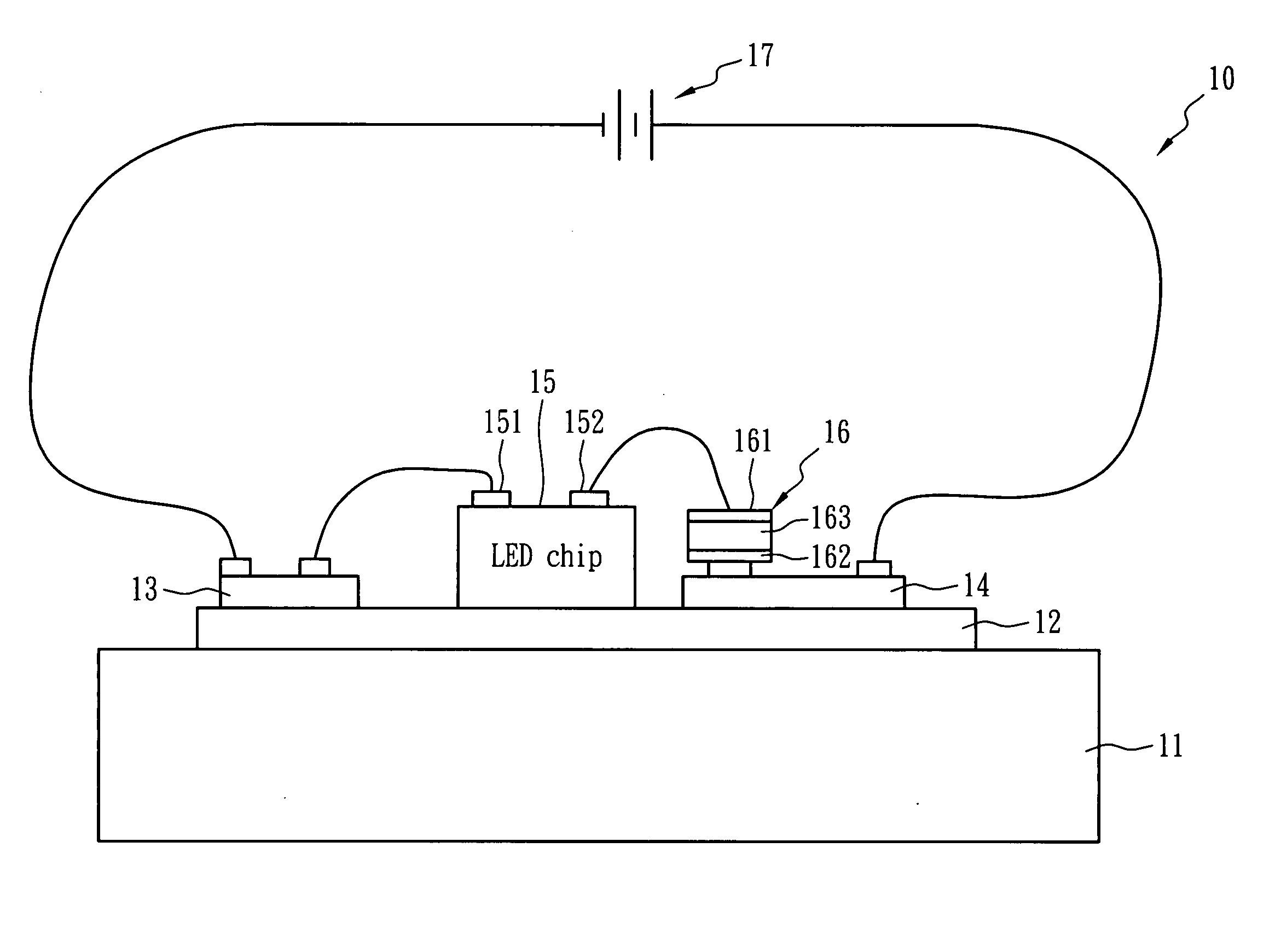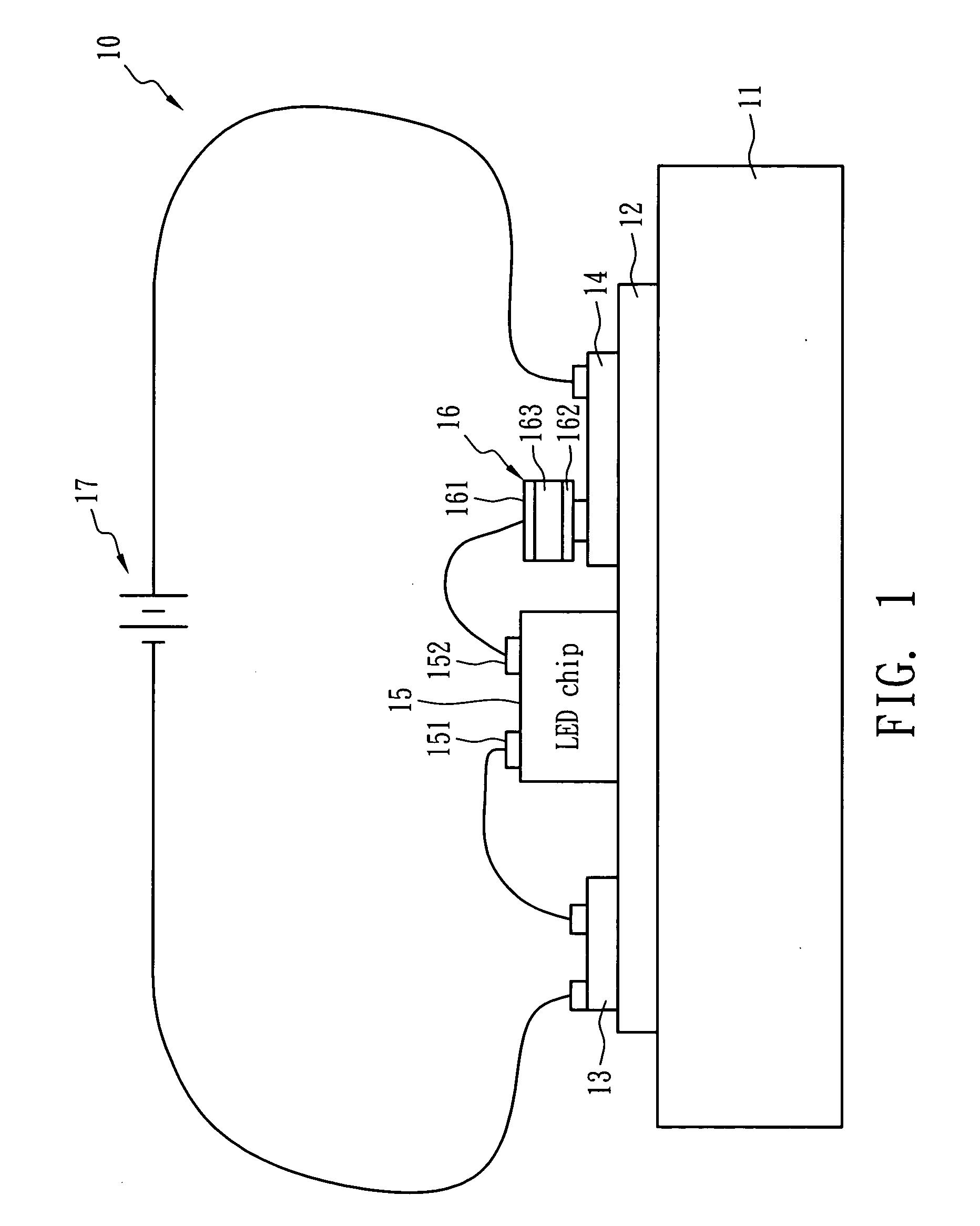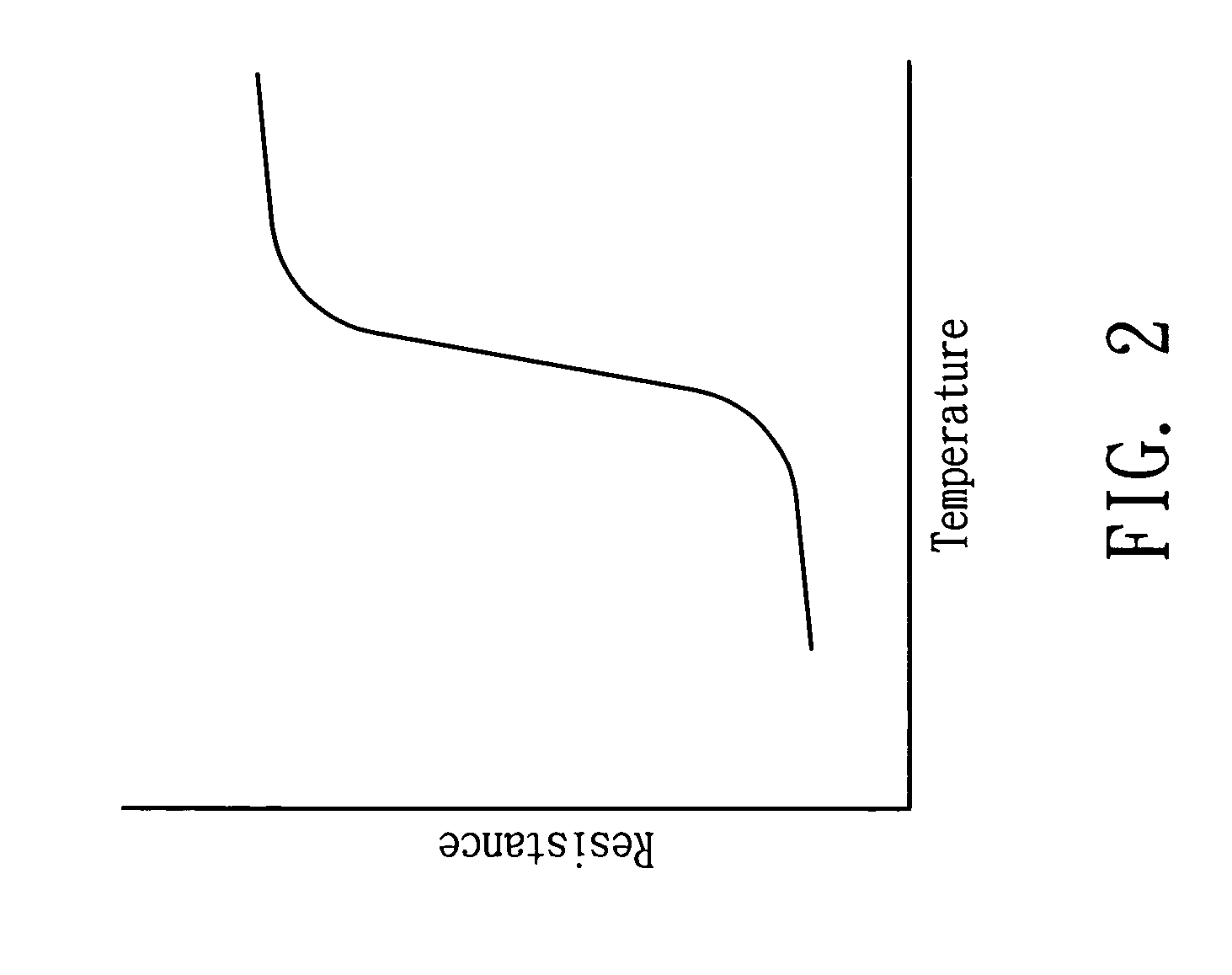LED apparatus with temperature control function
- Summary
- Abstract
- Description
- Claims
- Application Information
AI Technical Summary
Benefits of technology
Problems solved by technology
Method used
Image
Examples
Embodiment Construction
[0027] The present invention will be explained with the appended drawings to clearly disclose the technical characteristics of the present invention.
[0028]FIG. 1 illustrates an LED apparatus with temperature control function in accordance with an embodiment of the present invention. An LED apparatus 10 comprises a heat dissipation plate 11, a heat conductive layer 12, a first electrode 13, a second electrode 14, an LED chip 15 and a temperature control device 16. The LED chip 15, the first electrode 13 and the second electrode 14 are disposed on a side of the heat conductive layer 12, and the other side of the heat conductive layer 12 is in contact with the heat dissipation plate 11 so as to dissipate the heat of the LED chip 15. In short, the heat conductive layer 12 and heat dissipation plate 11 are used for carrying the LED chip 15 and for heat dissipation while the LED chip 15 illuminates.
[0029] The distance between the temperature control device 16 and the LED chip 15 is less...
PUM
 Login to View More
Login to View More Abstract
Description
Claims
Application Information
 Login to View More
Login to View More - R&D
- Intellectual Property
- Life Sciences
- Materials
- Tech Scout
- Unparalleled Data Quality
- Higher Quality Content
- 60% Fewer Hallucinations
Browse by: Latest US Patents, China's latest patents, Technical Efficacy Thesaurus, Application Domain, Technology Topic, Popular Technical Reports.
© 2025 PatSnap. All rights reserved.Legal|Privacy policy|Modern Slavery Act Transparency Statement|Sitemap|About US| Contact US: help@patsnap.com



